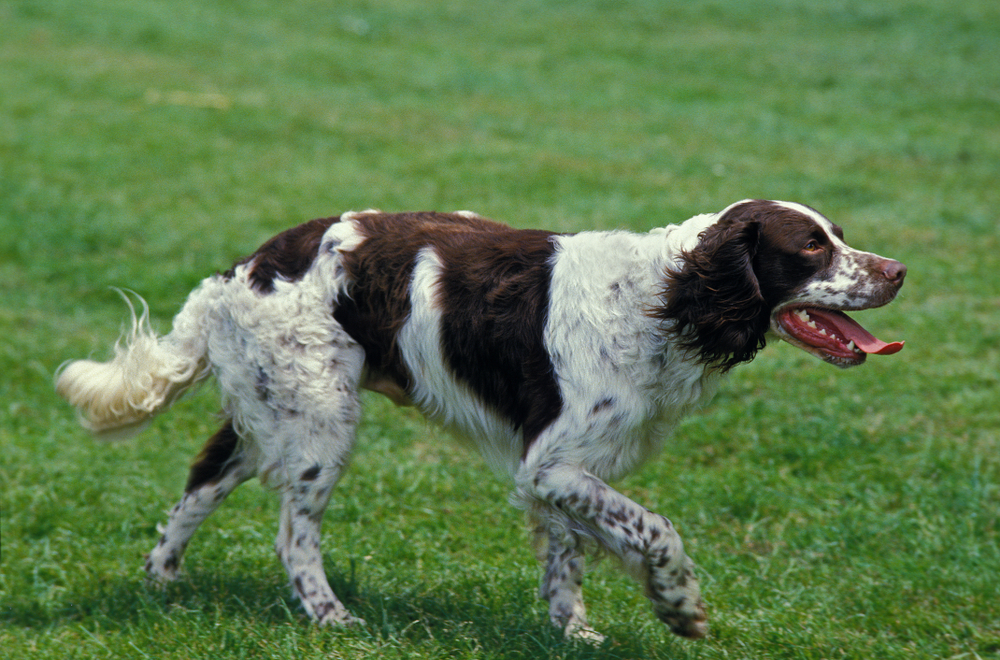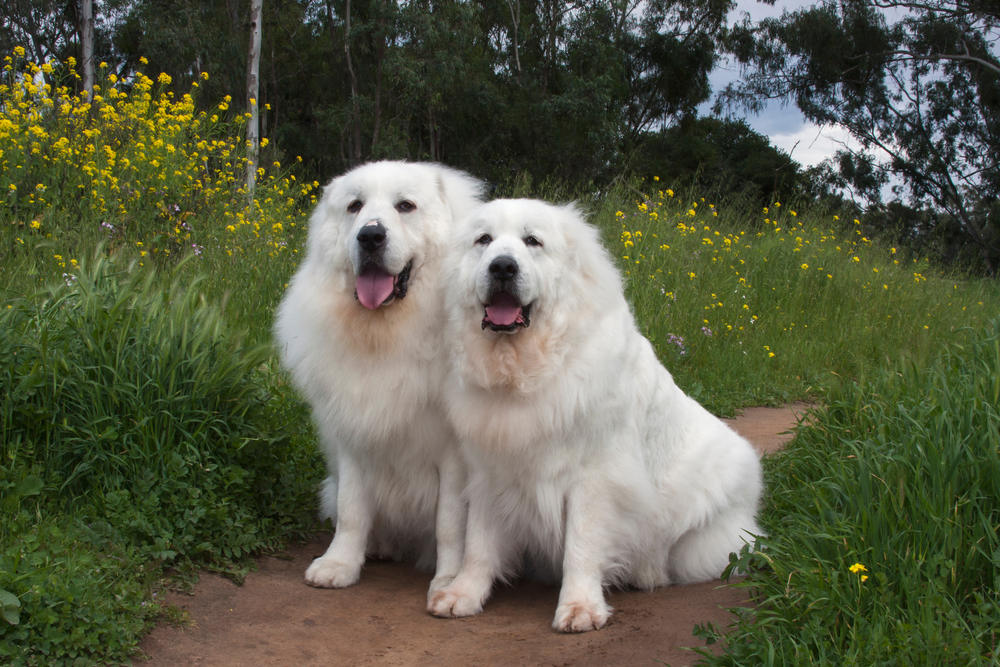Click Below to Skip Ahead
The French Spaniel—known as “Epagneul Français” in their homeland—is an outgoing, enthusiastic, medium-sized pointing breed with hunting origins and ancestry dating back to the Middle Ages. This makes the French Spaniel one of the oldest pointers. Today, they are members of the American Kennel Club’s sporting group, along with compatriots the Brittany and the Barbet.
If you are considering making a French Spaniel a member of your family, this guide details all you need to know about these lovable pups.
Breed Overview
Height:
21.5–24 inches
Weight:
50–60 pounds
Lifespan:
10–12 years
Colors:
Brown; white and brown
Suitable for:
Active and loving families
Temperament:
Outgoing, gentle, enthusiastic, loving, intelligent
Since they were developed as a versatile hunting dog, the French Spaniel is well-proportioned, with a sturdy but elegant build that is ideal for high activity levels and speeds. They come in two color varieties: brown and a combination of brown and white, but they sometimes have roan, spotted, or patched markings.
Their eyes hold a kind expression that reflects the French Spaniel’s even-tempered and friendly personality.
French Spaniel Characteristics

French Spaniel Puppies

French Spaniels aren’t as common as other, more popular breeds in the U.S., but some breeders do specialize in them. Exercise caution when choosing a breeder, and stick to only those with stellar testimonials, as irresponsible breeding tends to produce dogs more susceptible to serious genetic health conditions.
That said, adoption is an even better option because it’s less expensive and gives a dog the second chance they deserve. Although French Spaniels may not be easy to find in shelters, there are sure to be various spaniels and spaniel types if this is the kind of dog you like most.
Your French Spaniel puppy will no doubt be a bundle of joy with bags of enthusiasm and a determination to explore everything. Puppies need lots of special care and attention, as well as socialization and training, so be sure you’re up for the challenge.
French Spaniel Origin & History
The French Spaniel’s ancestors were bird-hunting dogs of the 14th century, first mentioned in “Livre de chasse” by Gaston III of Foix-Béarn. They spent much of the Middle Ages as royal favorites while also being put to work as pointing hunters and retrievers. For reference, pointing dogs are dogs that raise their paw and point their nose toward whatever it is that has captured their interest, like potential prey for their human hunting companions.
The first breed standard was produced by James de Connick in 1891, but it wasn’t until the 1970s that the French Spaniel headed for Canada and around 20 years later, the United States.

Temperament & Intelligence of the French Spaniel 🧠
The French Spaniel is noted for possessing a pleasant temperament and is often described as being enthusiastic and energetic when it comes to activities but gentle and docile as a companion. These dogs have also been marked for their intelligence and trainability due to an eager-to-please disposition and enthusiasm for learning and a broad variety of activities.
In addition to being a natural pointer, the French Spaniel is good at retrieving, so they’re happy when given little jobs to do around the house, like fetching or carrying items. You can also incorporate their talents into play sessions with games like hide and seek and fetch.
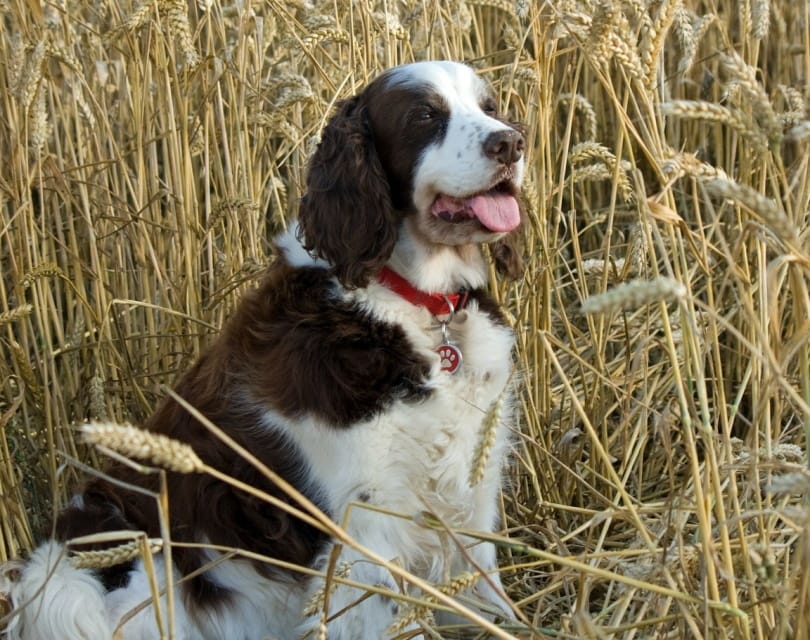
Are These Dogs Good for Families? 🏡
The American Kennel Club (AKC) has given the French Spaniel five out of five points in all three of its “family life” categories, including “affectionate with family” and “good with young children.” When properly socialized, the French Spaniel’s gentle but buoyant and happy nature makes for an ideal companion and playmate.
Just make sure everyone is sensible and respectful when interacting with the dog, and always supervise young children because they may not have formed a good sense of boundaries yet.
Does This Breed Get Along With Other Pets? 🐶 😽
In addition to scoring highly on the AKC’s family and children suitability chart, they also get five out of five points for being “good with other dogs.” If you take the time to socialize your French Spaniel as much as possible with other dogs from an early age, they’re highly likely to adapt nicely to life with fellow canine companions.

Things to Know When Owning a French Spaniel
Food & Diet Requirements 🦴
Your French Spaniel will need a complete and balanced diet to support their development, weight, and activity levels. You can get a good-quality formula online or in stores that adheres to all their nutritional needs, but it’s essential to check that it’s suitable for your dog’s age (puppies have different nutritional needs than adult dogs) and weight.
Check the daily allowance recommendation on the formula’s packaging, and serve according to this guideline to help prevent obesity. Be mindful of how many treats you offer. If your dog is a fast eater, consider a slow feeder to aid in digestion. Put out clean, fresh water for your dog at all times.
Exercise 🐕
French Spaniels were bred to be energetic and active, so this sporty dog needs quite a lot of exercise. Daily walks are a must, but your pup will also benefit from playing games with you in the yard and staying both physically and mentally stimulated with agility activities if you want to give them an extra challenge.
If you’re a jogger or hiker, a French Spaniel would make an ideal companion for these kinds of activities as long as you’re vigilant and make sure they’re not too strenuously exercised, especially in hot weather.
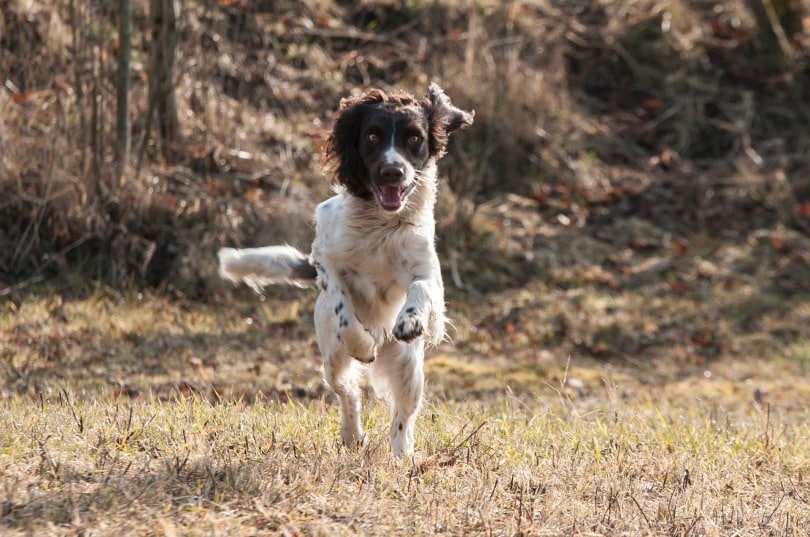
Training 🦮
Dog training is never “easy” and always comes with challenges, but the French Spaniel is often mentioned as a relatively easy dog to train. They’re naturally effervescent characters, love spending time with people, and learn quickly—all traits that come in useful during training. French Spaniels respond well to positive reinforcement.
Nevertheless, it’s still a good idea to sign up for obedience classes for your pup as early as possible because this gives you a head start. Obedience classes are not a replacement for at-home training, but having a professional’s input can be useful, and it means you have some form of support system.
Grooming ✂️
The French Spaniel’s coat is medium-length and smooth in texture. The coat only needs to be brushed thoroughly about once per week, and these dogs aren’t at all heavy shedders, though they do shed to some extent.
Since the French Spaniel’s coat is long, it may pick up dirt and debris when out and about, and this is completely normal, but a bath every now and then refreshes the coat. It isn’t necessary to bathe your French Spaniel regularly unless a vet says you should, as too much bathing can cause skin problems.
In addition, take a look inside your dog’s ears regularly to check that they’re clean and free of signs of infection, clean the teeth daily for optimal dental health, and trim their nails whenever needed or have a professional groomer do it.
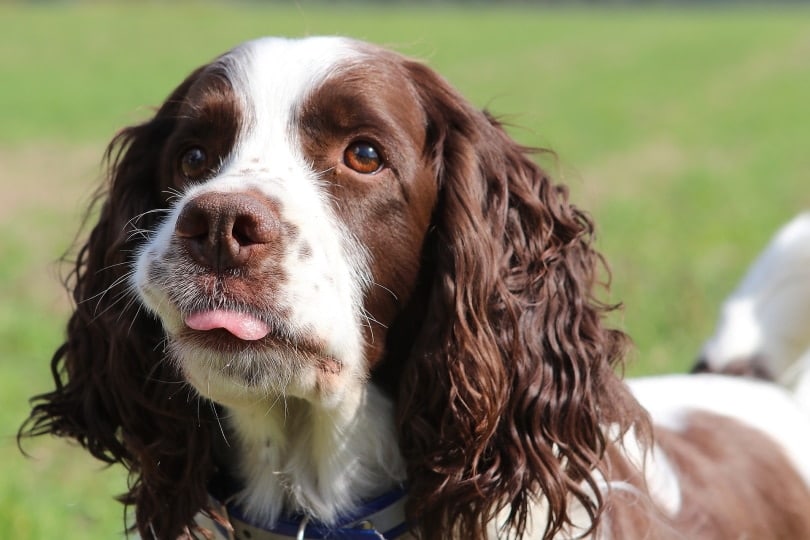
Health and Conditions ❤️
The French Spaniel has not been associated with many health conditions and is generally considered quite a healthy breed. Not much is known about possible genetic conditions, but according to one study, acral mutilation and analgesia were reported in 13 French Spaniels in Canada. This rare but serious neurodegenerative condition causes dogs to self-mutilate by chewing, licking, and biting at their extremities. It also stops dogs from being sensitive to pain.
- Acral mutilation and analgesia
- Mild skin conditions that clear up with treatment

Male vs. Female
With proper socialization and training, both male and female dogs can be equally excellent companions, and there are no specific personality differences. Each dog should be treated as a unique individual with their own traits and quirks, and it’s impossible to determine these without knowing the dog in question.
With both male and female dogs, you may experience difficulties if you decide not to have them spayed (females) or neutered (males). Hormones related to the heat cycle in female dogs can affect behavior, for example, causing females to be more agitated and clingier than usual and males to be more territorial and prone to roaming. Speak to your vet for information about spaying and neutering.

3 Little-Known Facts About the French Spaniel
1. The Breed Almost Went Extinct
The French Spaniel’s numbers dwindled by the 1900s, but the breed didn’t go extinct thanks to the efforts of a priest named Father Fournier, who used his private kennels to restore the breed. Nevertheless, they remain fairly rare.
2. The French Spaniel Is Quite Large
Although a medium-sized dog when compared to other dog types, the French Spaniel is the biggest spaniel breed.
3. The French Spaniel Has an Extra Talent
Historically, the French Spaniel wasn’t only used for pointing at and retrieving prey; they also worked as falconry dogs.

Final Thoughts
The French Spaniel is the perfect example of a well-balanced dog: smart, eager, and full of energy but also a docile and affectionate companion to anyone willing to give enough love back in return. They aren’t easy to find, though.
We’d like to encourage anyone thinking of opening their home to a spaniel to explore rescue organizations for the perfect match. This is a great way to get to know various dogs and really get a feel for what would be the right companion for you.
Featured Image Credit: slowmotiongli, Shutterstock

